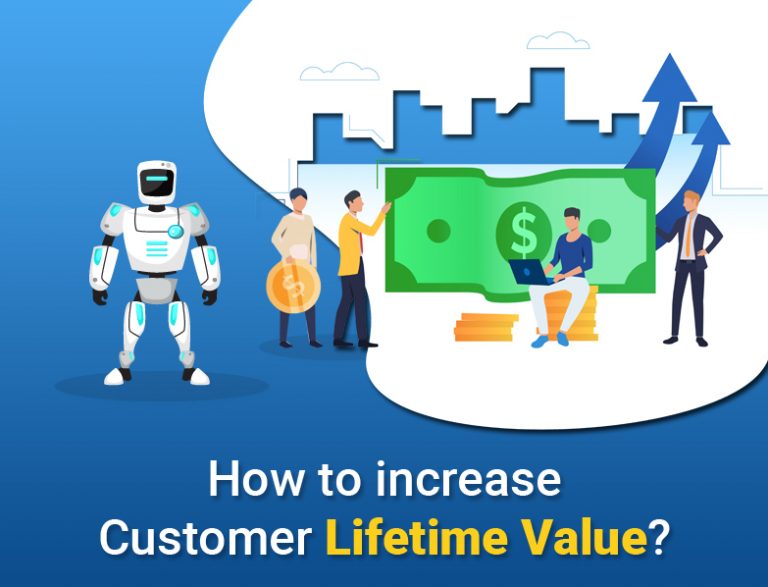Boost your Customer Lifetime Value with Machine Learning!
Marketers can calculate customer lifetime value using Machine Learning to figure out the gross monetary value of the long-term relationship with a customer. Further, it can be used to measure the performance of their customer retention and marketing strategies, and how much they should spend on customer acquisition.
The most significant benefit of using ML to calculate customer lifetime value is that ML models and techniques can deliver the most accurate results (predictions and forecasts). After all, that is the beauty of ML algorithms – accurate and improved results.
How can ML be used to improve marketing strategies to boost the Customer Lifetime Value?

While traditional CLV models rely on the ‘average’ aspect (average purchase value, average purchase frequency, average revenue), ML techniques/models include all these factors along with the customer data. By leveraging and learning from customer data (their needs, preferences, buying behavior, etc.), ML can create individualized customer lifetime models and foster customer lifetime value-based marketing.
Here are some ways in which ML can enhance your marketing strategies while also boosting the customer lifetime value:
Customer segmentation with clustering – Since all customers aren’t the same (some bring more revenue than others), unsupervised learning and clustering techniques (k-means, hierarchical clustering, etc.) can be used for customer value-based segmentation.

For instance, Affinio, an AI-powered consumer intelligence platform, analyzes massive volumes of consumer interest variables to identify specific customer’s interests hidden within the consumer datasets. Then it prepares a visual report of the customer segments having similar interests.
Dynamic pricing with regression models – Pricing schemes determine whether a product will resonate well with customers or not. Regression models in ML can make numerical value estimates based on already existing features. This allows marketers to enhance the different tenets of the customer journey accordingly. Also, the regression technique can be used to optimize marketing costs and sales forecasting.
Customer insight through text classification – Natural Language Processing (NLP) can probe both text and voice-based content. Based on variables like tone, sentiment, context, etc., NLP can classify the content to generate accurate consumer insights.
Automating customer experience (CX) with sophisticated chatbots – While scripted chatbots do not leverage NLP and ML (as they are primarily scripted), AI-powered chatbots can adapt to situations accordingly. They can learn through experience, can answer a host of intelligent questions, and can even escalate to human agents, if need be.
IBM Watson’s Tone Analyzer is an excellent example here – by parsing through online customer feedback data, it can determine the general tone of the customers from their reviews.
These are some of the most widely used ML techniques to improve marketing strategies for enhanced CLV. By allowing marketers to gain insights into individual customer segments, these techniques can help them to create highly personalized product marketing campaigns/offers to win customer loyalty. As a result, more and more customer segments will retain their loyalty to the brand, thereby boosting the customer lifetime value.
Curious to know more about how ML can boost customer lifetime value? Contact AISmartz today!
 1-888-661-8967
1-888-661-8967

